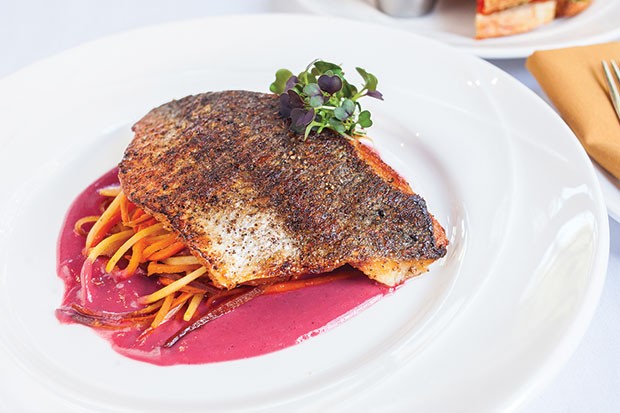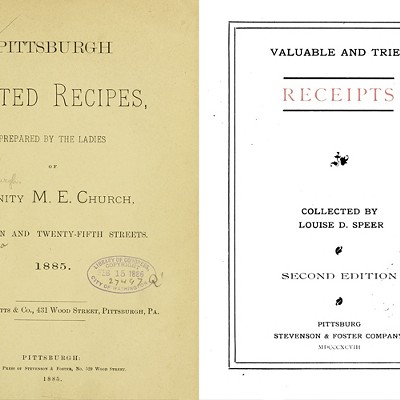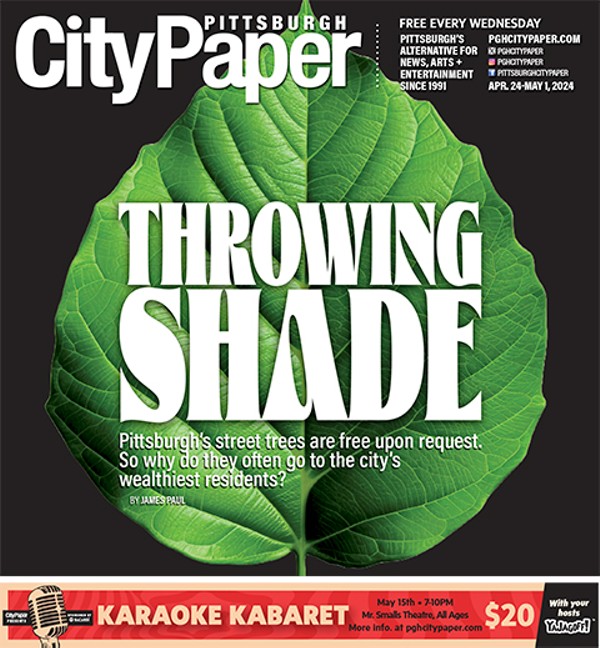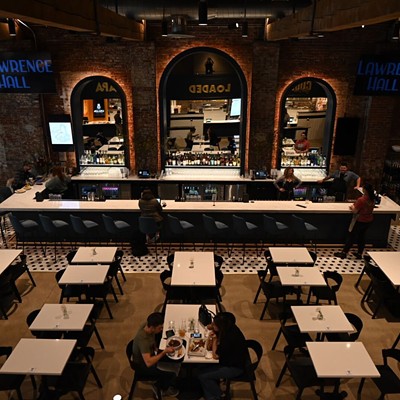Perhaps it’s the lingering air of Gilded Age privilege on the former Henry Clay Frick estate, or perhaps it’s the (deserved) reputation for high tea, that most genteel and pampering of rituals, but dining at the Café at the Frick is always wreathed with a sense of occasion. Certainly it is a place for which Mother’s Day reservations must be secured months in advance.
But the Café is there year-round, its outdoor patio just as lovely on weekdays as holidays, its glass-walled dining room framing views of Clayton’s gardens in every season. And while high tea will always be a special treat, the Cafe’s daily lunch menu and, more recently, dinner offerings on Fridays, when the entire Frick Art & Historical Center campus is open late, strive to provide everyday meals that are just as worthy of anticipation.
Befitting the cottage setting with its lush, expansive views, the menu is brief, but achieves wide range through weekly changes in several categories. There are always a soup and a quiche of the day, a couple of salads, three sandwiches and three entrees. Many vegetables and herbs are grown mere steps away in the site’s greenhouses. Preparations are decidedly current and upscale, though not pretentious, such as a shrimp-salad sandwich, served open-face on focaccia, or vegetable pad Thai made with carrot noodles, shiitake mushrooms and smoked almonds.
Location Details
Make no mistake, this was no old-school haute continental cuisine, in which a handful of ingredients, artfully arranged, stood in for a meal. Here, dishes were neither heavy nor superfluously light, and thoughtfully specified ingredients were combined in the perfect proportions to satisfy without yielding leftovers. An excellent example was a cup of beef barley soup, a hearty dish if ever there was one. The broth was a shimmering russet, flavorful but not too intense, with a silken mouthfeel. Fine strands of beef were tender and rich, pearls of barley small and firm. This was a refined version of a peasant dish — as opposed to a re-imagination or deconstruction — that deftly combined the pleasures of both fine and humble cookery.
Similarly, the steak sandwich made clear reference to a classic Philly cheesesteak, down to playfully describing its double-Gloucester onion-and-chive cheese as “whiz.” But the rich, intense effect of this cheese elevated this sandwich far above street-corner fare, along with the chaste portion of peppery arugula in place of sloppy sautéed peppers and onions. The meat was shaved ribeye, crowned king of steaks for its tenderness and richly marbled beefiness. The Allegro Hearth ciabattini roll was another superb upgrade, striking a good balance between hearty crust and tender crumb to envelop the juices of the sandwich.
When the kitchen does a take on a luncheon classic like the aforementioned shrimp salad, it doesn’t skimp on the flavors. In this sandwich, caramelized Vidalia aioli made for the thick, rich, creamy dressing that was brightening with shaved fennel and arugula. Small, steamed shrimp were plump and juicy. The only off-note was in the focaccia base, which seemed rather too substantial, even downright heavy, for this rich yet delicate salad. In the end, we mostly ate the salad off the top.
By contrast, not one scrap was left on the plate that brought the pork cutlet. Such an understated name for such a complex and delectable dish! A bit misleading, as well, given that “cutlet” generally denotes a thin slice of meat, often pounded flat. In contrast, the Café serves a substantial cut similar in size to a boneless pork chop, but not remotely as dry and bland. In a long life of enjoying pork, this was one of the very best pieces Jason has ever had: impossibly tender, bursting with savory juices, and wonderfully complemented by a pan sauce studded with mixed mushrooms and finely cut asparagus stalks. The mushrooms added another form of tender umami, while the crunchy asparagus brought textural contrast; a few whole asparagus tips, cooked a little further, contributed bright, vegetal notes. As an indication of what the kitchen can produce for dinner entrees, this dish made us wish they were open every night.
The fish of the day was another bravura accomplishment. A perfectly succulent pan-roasted filet of red snapper, lusciously, lightly browned, reposed atop a tender bed of julienned zucchini, all in a sweet-savory red-pepper cream sauce. What made this dish so delicious was not only the skilled preparation of each element, but the ideal proportions of their combination.
The Café at the Frick is an exceptional dining experience at accessible prices. It would be a shame to save it for special occasions.

















